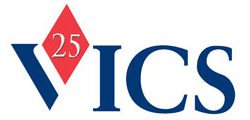Bloomingdale’s exec: RFID boosts inventory accuracy, sales
Article by Rachel Lamb, Luxury Daily
NEW YORK – The usage of RFID by retailers can give them consistent access to inventory and on-shelf availability, therefore growing sales by increasing accuracy in product availability, according to a panel at Aberdeen’s Third Annual Retail and Consumer Markets Summit.
A faster technology than bar codes, RFID has helped retailers including Bloomingdale’s, Macy’s, Lord and Taylor and Elie Tahari keep track of inventory and speed up annual product checks. However, most brands are hesitant to jump into this new technology.
“In the lady’s shoe business especially, if it is not on the floor, you cannot buy it,” said Eileen DiLeo, senior vice president of operations at Lord and Taylor, New York. “We had to determine whether certain styles were out for sale on the floor and with limited technology were only able to do it once per week.
“We figured out that if we could fill the products in faster for sale, it would incrase our business,” she said. “RFID increased our manpower and visibility so that we can start every day 100-percent knowing that our store is ready for customers.”
RFID, or radio frequency identification tags, are intelligent bar codes that communicate to a networked system to keep track of items.
Radio in
Lord and Taylor reported a 1-2 percent lift in every store by ensuring that it had on-floor availability. Furthermore, there was a 75 percent increase in manpower, per Ms. DiLeo.
The employment of RFID allows Lord and Taylor to do daily scans that ensure that the accurate number of colors, styles and sizes are on the floor.
Macy’s Inc., which owns Macy’s and Bloomingdale’s department stores, also uses RFID.
The company started implementing RFID in its Bloomingdale’s SoHo location in New York approximately three years ago, according to Pam Sweeney, senior vice president of logistics systems and technology for Macy’s, New York.
“We started eventually rolling out to several Bloomingdale’s and Macy’s to develop a business case around item accuracy and to better manage inventory,” Ms. Sweeney said.
As a result, the company was able to better manage 30 percent of its inventory in all of its stores.
“We were very excited to move forward, but our initial business case is our ability to do more frequent cycle counts versus what we can do with bar codes,” Ms. Sweeney said. “It is less labor-intensive and disruptive to business models and just as good on an accuracy level.”
Even independent retailers are using RFID.
Elie Tahari, for example, sees huge benefits on the supply chain side.
“We receive the merchandise much faster and it is counted manually at the source to make sure that the handtag matches the garment in inventory,” said Nihad Aytaman, director of software development of Elie Tahari, New York.
Jumping in
RFID is a relatively new technology and, keeping true to form, luxury marketers are hesitant to get on board right away.
Even Lord and Taylor’s Ms. DiLeo said that her retailer was “No. 2 to adopt to technology.”
“It is not exactly unproven, but it is still a mystery,” Ms. DiLeo said. “As we dug deeper, we found that you need to have specific resources and it is a real challenge, especially when you want to appoint a particular person for this position.”
Another big reason is cost.
A lot of retailers and vendors talk about how brands will see a 3-5 percent sales lift, but whether or not it will actually happen is a main source of skepticism for higher-up executives, per Elie Tahari’s Mr. Aytaman.
“It is not simple to implement and there are a lot of symbols and logistics to make it work,” Mr. Aytaman said. “Our approach is that we walk before we run.”
However, the majority of the panel agreed that RFID is likely the future of the business.
It could be that the possible cons outweigh the pros, especially in the case of brands that have already seen success with RFID.
“Item accuracy is only going to lead to the right product in stock for the customer,” Macy’s Ms. Sweeney said. “The worst thing that you can do is disappoint the customer or drive them to someone else.”
 English
English Español
Español Français
Français Italiano
Italiano 中文(简体)
中文(简体) Nederlands
Nederlands Deutsch
Deutsch Cрпски језик
Cрпски језик Română
Română Svenska
Svenska

